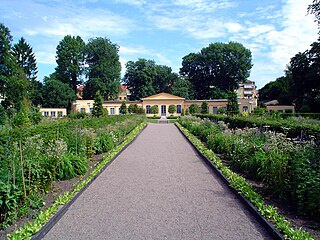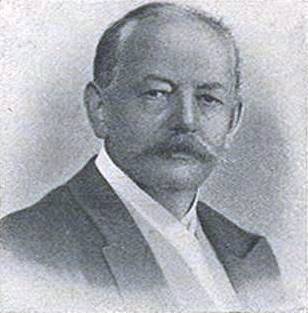Related Research Articles
In biological classification, the order is
- a taxonomic rank used in the classification of organisms and recognized by the nomenclature codes. Other well-known ranks are life, domain, kingdom, phylum, class, family, genus, and species, with order fitting in between class and family. An immediately higher rank, superorder, may be added directly above order, while suborder would be a lower rank.
- a taxonomic unit, a taxon, in that rank. In that case the plural is orders.

The International Plant Names Index (IPNI) describes itself as "a database of the names and associated basic bibliographical details of seed plants, ferns and lycophytes." Coverage of plant names is best at the rank of species and genus. It includes basic bibliographical details associated with the names. Its goals include eliminating the need for repeated reference to primary sources for basic bibliographic information about plant names.

The International Code of Nomenclature for algae, fungi, and plants (ICN) is the set of rules and recommendations dealing with the formal botanical names that are given to plants, fungi and a few other groups of organisms, all those "traditionally treated as algae, fungi, or plants". It was formerly called the International Code of Botanical Nomenclature (ICBN); the name was changed at the International Botanical Congress in Melbourne in July 2011 as part of the Melbourne Code which replaced the Vienna Code of 2005.

François Gagnepain was a French botanist. The standard botanical author abbreviation Gagnep. is applied to plants described by Gagnepain.

A botanical name is a formal scientific name conforming to the International Code of Nomenclature for algae, fungi, and plants (ICN) and, if it concerns a plant cultigen, the additional cultivar or Group epithets must conform to the International Code of Nomenclature for Cultivated Plants (ICNCP). The code of nomenclature covers "all organisms traditionally treated as algae, fungi, or plants, whether fossil or non-fossil, including blue-green algae (Cyanobacteria), chytrids, oomycetes, slime moulds and photosynthetic protists with their taxonomically related non-photosynthetic groups ."
Botanical nomenclature is the formal, scientific naming of plants. It is related to, but distinct from taxonomy. Plant taxonomy is concerned with grouping and classifying plants; botanical nomenclature then provides names for the results of this process. The starting point for modern botanical nomenclature is Linnaeus' Species Plantarum of 1753. Botanical nomenclature is governed by the International Code of Nomenclature for algae, fungi, and plants (ICN), which replaces the International Code of Botanical Nomenclature (ICBN). Fossil plants are also covered by the code of nomenclature.
In botanical nomenclature, author citation refers to citing the person or group of people who validly published a botanical name, i.e. who first published the name while fulfilling the formal requirements as specified by the International Code of Nomenclature for algae, fungi, and plants (ICN). In cases where a species is no longer in its original generic placement, both the author(s) of the original genus placement and those of the new combination are given.

Heinrich Gustav Adolf Engler was a German botanist. He is notable for his work on plant taxonomy and phytogeography, such as Die natürlichen Pflanzenfamilien, edited with Karl A. E. von Prantl.

Willis Linn Jepson is known as California's most distinguished early botanist. He graduated from the University of California in 1889, and became a UC professor in botany, a botanical writer, and a conservationist.
Lombardo is an Italian demonym and surname, most commonly found in Sicily where it is the third most common family name. Notable people with the name include:
Julian Alfred Steyermark was an American botanist. His focus was on New World vegetation, and he specialized in the family Rubiaceae.

(Klas) Robert Elias Fries, the youngest son of Theodor Magnus Fries (1832–1913) and grandson of Elias Magnus Fries(1794–1878) and an expert on mushrooms. A Swedish botanist who was a member of the British Mycological Society and involved with The Botanical Museum (UPS), Botanic Garden and Botanical Museum Berlin-Dahlem, Natural History Museum (BM), the National Botanic Garden of Belgium (BR), Conservatoire et Jardin botaniques de la Ville de Genève (G), Royal Botanic Gardens, Kew (K),the Swedish Museum of Natural History Department of Phanerogamic Botany (S) and the United States National Herbarium, Smithsonian Institution (US).
Andrew James Henderson is a palm-systematist and Curator of the Institute of Systematic Botany at the New York Botanical Garden. He has authored taxonomic descriptions of 140 species, subspecies and varieties of plants, especially in the palm family

Alexander Geoffrey Floyd is an Australian botanist with an expert knowledge of rainforest plants, particularly the rainforest trees of New South Wales. He has worked with the New South Wales Forestry Commission, the Department of Forestry in Papua-New Guinea, and the National Parks and Wildlife Service of New South Wales. He helped create the North Coast Regional Botanic Garden at Coffs Harbour. Two genera and several species of plants are named in his honour; including Floydia, Alexfloydia, and Endiandra floydii.
Chōzaburō Tanaka or often Romanized as Tyôzaburô Tanaka was a Japanese botanist and mycologist. He established one of the two major taxonomic classification systems for citrus and related genera currently in use, and is now considered to be a taxonomic "splitter". He is the author of 180 botanical names in the citrus family Rutaceae, including for example Citrus × latifolia and Citrus tangerina (tangerine). Many of the species Tanaka described are still recognized, but his overall scheme is not supported by modern genetic research.

William Faris Blakely was an Australian botanist and collector. From 1913 to 1940 he worked in the National Herbarium of New South Wales, working with Joseph Maiden on Eucalyptus, Maiden named a red gum in his honour, Eucalyptus blakelyi. His botanical work centred particularly on Acacias, Loranthaceae and Eucalypts.

Parque Prado is the largest of Montevideo's six principal public parks. Established in 1873, it covers an area of 106 hectares and is located in the barrio of Prado. Located in the northern part of the city, the Miguelete Creek flows through the neighbourhood and park of the same name.

Por Amor is a 1997 Brazilian telenovela created by Manoel Carlos, starring Regina Duarte and Gabriela Duarte in the main roles.

Dr Maarten Joost Maria Christenhusz is a Dutch botanist, natural historian and photographer.
Sidney Fay Blake (1892–1959) was an American botanist and plant taxonomist, "recognized as one of the world's experts on botanical nomenclature."